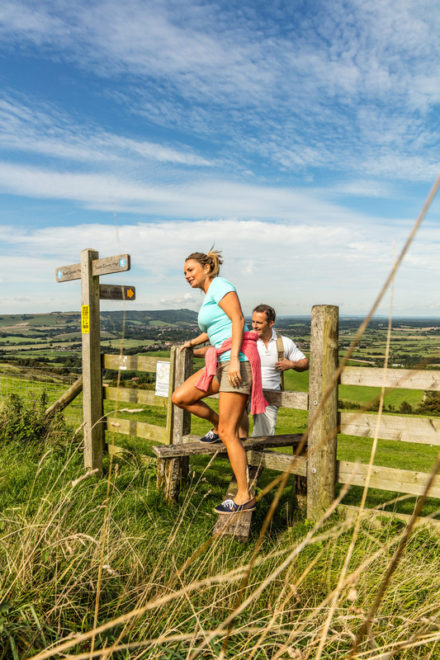Outcome 1: Landscape & Natural Beauty
The landscape character of the South Downs, its special qualities, natural beauty and local distinctiveness have been conserved and enhanced by avoiding or mitigating the negative impacts of development and cumulative change.
- WHY IS IT IMPORTANT?
The South Downs National Park (National Park) is not just stunning views, it is made up of a variety of complex landscapes − a rich tapestry reflecting its underlying geology and centuries of human influence.
The eastern Downs have an open and expansive character, with scenic views across the Weald and out to sea, and include the Heritage Coast around Cuckmere Haven and the Seven Sisters.
In the central and western Downs, woodland is a more characteristic feature. North of the chalk Downs, the Wealden clay and greensand is more enclosed and intimate, with its remnant heathland and sunken lanes.
But pressures upon these landscapes are many and varied and they continue to be shaped by land use, agriculture and the many impacts of human settlement from small-scale clutter to large scale infrastructure such as new roads, pipelines or cable routes. Over time cumulative impact could be to erode its special qualities.
For this outcome our priorities for the next five years are:
- 1.1 PROTECT LANDSCAPE CHARACTER
To protect and enhance the natural beauty and character of the National Park and seek environmental net-gain from any infrastructure projects.
It is important that the qualities of the landscape are conserved and enhanced for future generations to appreciate and enjoy. Land management, large-scale infrastructure and development schemes can all have a significant impact on the landscape and visual amenity.
The South Downs National Park Authority (the Authority) will continue to develop groundbreaking evidence and understanding about the landscape and natural beauty of the National Park in order to effectively predict, manage and monitor threats from a range of issues such as climate change, agricultural methods, development and recreational pressures.
Infrastructure providers will be encouraged to identify the potential for harm to the National Park through an evidence-based approach and to following the mitigation hierarchy in the development and evolution of their proposals.
The Defra Environmental metrics to achieve environmental net gain will be applied, where possible, to any proposals for new infrastructure and major development within the setting of and in the National Park.
Example: Truleigh Hill

At 216 metres, Truleigh Hill is a high point on the South Downs, with the South Downs Way National Trail running across it.
This landscape-based project involves working with a wide range of local stakeholder groups to develop a landscape management plan for Truleigh Hill to enhance the area for the immediate and long term.
An important aspect of the project will be to link with surrounding schools and colleges in order to educate and engage with young people in the surrounding communities.
It is hoped that by learning about the geography, history and evolution of the landscape they will treat it with regard in the future.
- 1.2 CREATE GREEN INFRASTRUCTURE
To improve green and blue infrastructure to deliver nature recovery networks and connect people to nature within and around the National Park.
Green Infrastructure planning is an international approach that incorporates natural solutions and strategic investment in the natural environment to deliver a wide range of benefits.
These include: water & flood risk management, the economy, biodiversity, access, health & wellbeing, resources (food, fuel) and climate change adaptation.
It can be thought of as creating a “people and nature network”.
Work is underway between a range of partners to create a “people and nature network” in and around the National Park by targeting the areas that can offer the greatest benefits, establishing a series of pilot projects and setting out some common principles for the planning, delivery and management of natural capital assets in the area.
- 1.3 TARGET NEW PAYMENTS
To maximise environmental, cultural and economic benefits of agri-environment and forestry schemes across the National Park
Over the next five years a major transition will start to take place toward a new post-EU, farming and forestry support scheme regime for England. The aim is to provide public money for public benefits like better soils, clean water, access or wildlife.
The Authority will bring farmers, foresters, estates, other land managers and water companies together with Defra and Natural England to pilot the New Environmental Land Management System (NELMS) for the South Downs and other lowland mixed-farming landscapes.
Your National Park champion – Paul Gorringe
Paul Gorringe is a ranger with Brighton and Hove City Council.
Paul trains and works with a team of volunteer shepherds at Sheepcote Valley, a patch of species-rich chalk grassland sitting on the border of the South Downs National Park in Whitehawk, Brighton.
Through this work, Paul is inspiring the local community to engage with the landscape and help to protect it for future generations.
Are you inspired by Paul’s story?
Here’s some suggestions of how you can help protect and enhance the natural beauty of the South Downs National Park.
